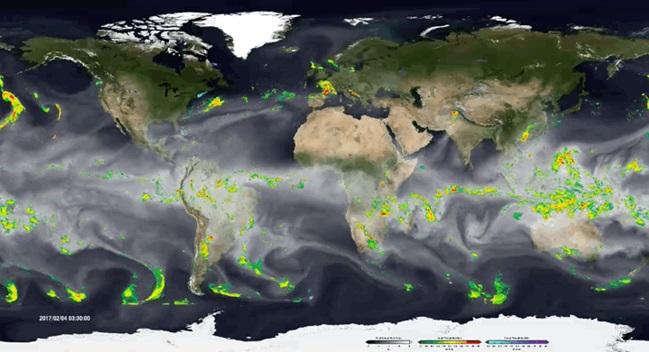| (Mains, General Studies Paper-1: Geophysical phenomena, geographical features and their location- changes in critical geographical features and flora and fauna and the effects of such changes) |
Reference:
According to a new study published in ‘Science Advances’ of the University of California, atmospheric rivers have shifted by about 6 to 10 degrees towards both poles in the last four decades. This situation is affecting the global climate pattern and accelerating the effects of climate change.

What are atmospheric rivers:
- Atmospheric rivers are relatively long and narrow areas in the atmosphere that transport most of the water vapor outside the tropical regions. They are like rivers in the sky.
- Although atmospheric rivers come in many sizes, those with the highest water vapour and the strongest winds can cause heavy rainfall and flooding.
- For example, the Pineapple Express is a strong atmospheric river capable of bringing moisture from tropical regions near Hawaii (USA) to the west coast of the US.
- Atmospheric rivers are often found in the extreme tropical North Pacific and Atlantic, Southeastern Pacific and South Atlantic oceans, often causing landfall on the western coasts of North and South America.
- Atmospheric rivers usually form in tropical regions. Warm temperatures cause sea water to evaporate and rise into the atmosphere. Strong winds help carry the water vapour into the atmosphere.
- As atmospheric rivers pass over land, the water vapour spreads far into the atmosphere. After some time, these water droplets cool down and are received as rain.
Major findings of the study:
- According to the study, one of the main reasons for the shift of atmospheric rivers towards the poles is the change in sea surface temperature in the Pacific region.
- Since the year 2000, a trend of cooling of water has been observed in the Pacific region. This situation is associated with La Nina conditions and is pushing atmospheric rivers towards the poles.
- When the sea surface temperature in the Pacific region decreases, it affects rainfall in different parts of the tropical regions.
- According to experts, climate change has also made monsoon rainfall more irregular in India. After a long period of drought, torrential rain is suddenly falling at a place in a very short time.
- The reason for this may be the effect of atmospheric rivers along with the excessive increase in humidity due to global warming.
Major implications of the study:
- In subtropical regions, where atmospheric rivers are decreasing, this may result in prolonged drought and water shortage.
- California and southern Brazil depend on atmospheric rivers for rainfall to recharge reservoirs and for agriculture.
- Without this moisture, these regions could face water shortages, putting pressure on communities, agriculture and ecosystems.
- Atmospheric rivers flowing poleward could cause more intense rainfall, flooding and landslides in high latitudes. Effects could be seen along the US coast, in the Pacific Northwest, Europe and even in polar regions.
- Current changes reflect changes caused primarily by natural processes, but human-induced global warming also plays a role. Global warming is also projected to increase the overall frequency and intensity of atmospheric rivers in the future.


